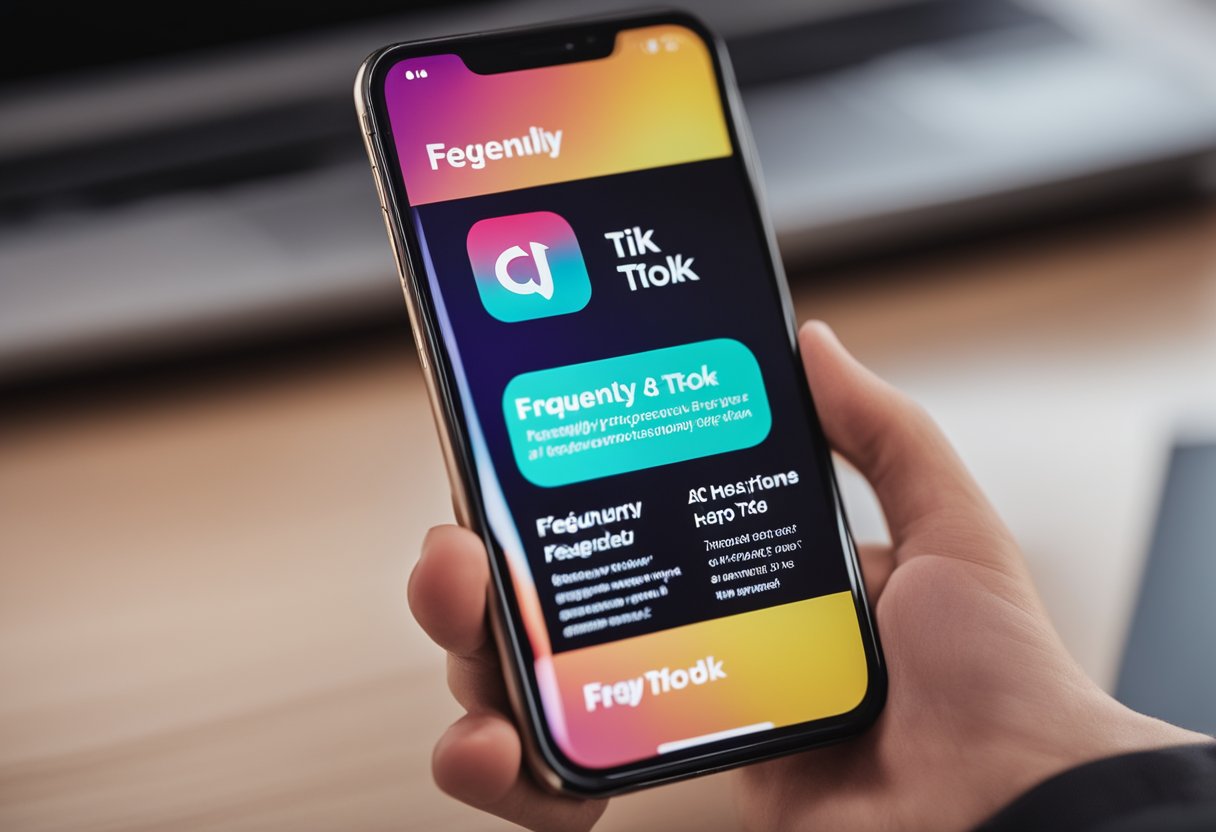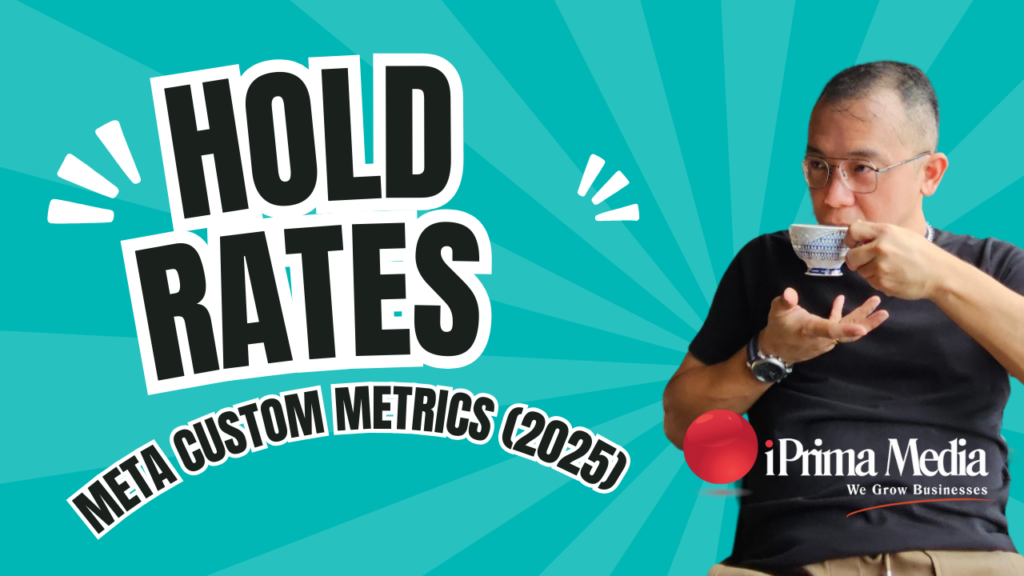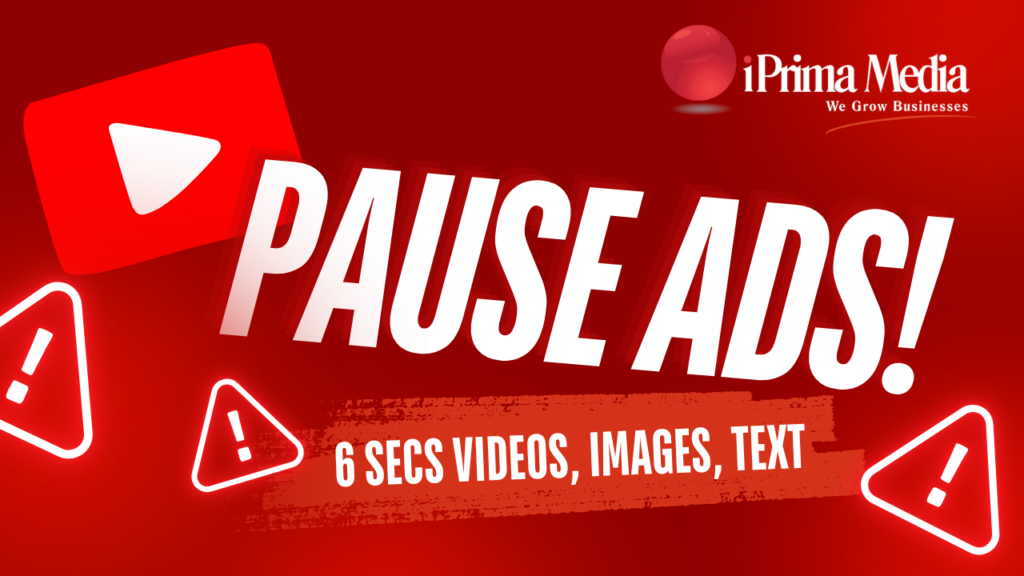TikTok has rapidly emerged as a new frontier in digital marketing, offering a unique platform for advertisers to reach a diverse and engaged audience.
With a user base that spans across various demographics globally, TikTok ads enable brands to create immersive, full-screen advertising experiences that can capture the attention of potential customers.
The platform's intuitive Ads Manager facilitates the setting up of campaigns, allowing businesses to define their objectives, target audience, and budget, ensuring that their messages reach the most relevant viewers.

The effectiveness of TikTok advertising lies in its ability to blend seamlessly into the user's content feed, making ads feel like a natural part of the TikTok experience.
Creative strategies are paramount, as the platform's culture encourages fun, authenticity, and engagement.
Advertisers need to craft their content to resonate with the community, aiming for engagement while keeping in line with safety and compliance guidelines.
Optimizing ad conversions on TikTok involves monitoring performance metrics and adjusting campaign strategies in real time, helping marketers to achieve their business results while fostering meaningful connections with their audience.
Key Takeaways
- TikTok provides an immersive advertising platform reaching a global, diverse audience.
- Effective TikTok campaigns require creativity and adherence to platform-specific guidelines.
- Real-time optimization is crucial for engaging the audience and improving ad conversions on TikTok.
GROW MY BUSINESS NOW
Understanding TikTok Ads
TikTok advertising offers a full-screen, sound-on experience through a variety of ad formats, leveraging creative tools to capture the attention of its audience.
Advertising on TikTok Basics
TikTok's platform allows advertisers to engage with users by providing immersive, video-based advertisements. Advertisements on TikTok are full-screen and offer a sound-on experience, which can increase user engagement.
The process begins with setting up an account, choosing objectives such as traffic, app installs, or conversions, and then planning a campaign that caters to a wide audience on TikTok.
Types of TikTok Ad Formats
There is a range of TikTok ad formats tailored to different marketing goals and strategies:
- In-Feed Ads: These are video ads that appear between user content as they scroll through their “For You” page.
- Branded Hashtag Challenges: Advertisers can engage users by encouraging them to create content around a branded hashtag.
- Branded Effects: Businesses can create custom filters, stickers, and effects, allowing users to interact directly with their brand.
- TopView Ads: These ads appear at the top of the user's TikTok feed when they first open the app, delivering a long-form video experience up to 60 seconds.
The Role of Creative Tools in Ads
Creative tools on TikTok are integral to crafting compelling ad content. Advertisers have access to a suite of tools on the platform that aid in producing engaging and interactive content. Some of these tools include:
- Video editing tools: To customize their videos with filters, effects, and music that resonate with the target audience.
- Smart Video Soundtrack: TikTok's AI technology can automatically pair ads with a music soundtrack from a library of licensed tracks.
- Interactive components: These allow users to interact with ad elements such as embedded links and calls to action.
By understanding the basics of advertising on TikTok, the variety of ad formats available, and the role of creative tools, advertisers can effectively create campaigns that resonate with the platform's users.
Setting Up Your Campaign

When one ventures into advertising on TikTok, the initial steps revolve around crafting a campaign in TikTok Ads Manager. By selecting the appropriate objectives for one's campaign, businesses set themselves on a path to effectively target their desired audience.
Navigating TikTok Ads Manager
To begin with a campaign in TikTok Ads Manager, the user must first log in to their account. After accessing the dashboard, they can easily locate the Campaign button at the page's top tier. Clicking on this leads to the creation module, where individuals can commence their advertising journey.
The seamless interface of the Manager guides the user through the process, ensuring that they can handle the tasks without complexity.
Choosing the Right Campaign Objective
The choice of the advertising objective is critical, as it steers the direction of the campaign and influences its success.
TikTok Ads Manager presents users with various objectives, which align with different business goals such as:
- Brand Awareness: Introducing your brand to a wider audience.
- Traffic: Driving visitors to your website or app.
- Conversions: Encouraging actions such as purchases or signups.
Selecting an objective informs TikTok Ads Manager of what the campaign aims to achieve and optimizes it accordingly. Campaign setup in TikTok is thus hinged on pinpointing the precise objective, as it affects subsequent ad group selections and ad details.
GROW MY BUSINESS NOW
Targeting the Right Audience
Targeting the right audience is crucial for the success of TikTok ads.
It involves identifying and reaching the specific demographic and behavioral segments that are most likely to be interested in the advertised product or service.
Demographics: Age, Gender, and Location
Advertisers on TikTok can specify their target audience by age, gender, and location to ensure their ads are shown to the most relevant users. Age-based targeting allows brands to reach users within specific age ranges.
Gender targeting can be used to tailor the message to men, women, or all genders.
Location targeting provides the ability to serve ads to users in specific regions, from broad geographic areas to more precise localities.
- Age: Set specific ranges (e.g., 18-24, 25-34)
- Gender: Choose male, female, or all genders
- Location: Target countries, cities, or by radius
Interests and Behaviors
In addition to demographics, TikTok allows for targeting based on interests and user behaviors.
Interest targeting involves aligning ads with long-term interests and passions of the users, such as gaming, food, or finance.
Behavior-based targeting utilizes user interaction data to identify potential customers based on their actions within the app.
- Interests: Categories like gaming, food, finance, etc.
- Behavior: User interactions, app usage patterns
Budgets and Bidding

In the arena of TikTok advertising, mastering budgets and bidding is crucial for campaign success.
These components determine how effectively a business can reach its target audience while managing costs.
Understanding Bidding Methods
TikTok Ads Manager endorses two primary bidding methods. Cost Cap Bidding focuses on controlling the average cost per acquisition (CPA) by setting a limit on what the advertiser is willing to spend per desired action. Conversely, Lowest Cost Bidding aims to maximize the number of results regardless of a fixed CPA, allowing the system to generate as many outcomes as possible within the given budget.
- Cost Cap Bidding: Ideal for advertisers with a specific cost target
- Lowest Cost Bidding: Suitable for maximizing result volume
Each strategy has its merits, and advertisers must choose based on campaign objectives and cost considerations.
Allocating Your Budget Effectively
An efficient budget allocation is paramount for campaign longevity and performance.
TikTok Ads Manager provides two budget types: a lifetime budget for the entire span of a campaign, and a daily budget, which caps the amount spent each day.
- Lifetime Budget:
- Ensures spending is within the set amount over the campaign lifespan.
- Daily Budget:
- Controls day-to-day spending to avoid cost overruns.
Businesses must decide which budgeting approach aligns with their marketing plans, considering a campaign may consist of multiple ad groups, each with its budgetary requirements.
GROW MY BUSINESS NOW
Creative Strategies for Engaging Ads
In the realm of TikTok advertising, engagement hinges on the trifecta of captivating ad copy, dynamic visual content, and compelling calls to action.
Crafting Compelling Ad Copy
A well-composed ad copy is crucial for capturing viewers' interests and conveying the value proposition succinctly. Advertisers should focus on:
- Conciseness: Keep the message short and punchy to cater to TikTok's fast-paced audience.
- Relevance: Tailor the message to resonate with the targeted demographic, addressing their preferences and needs.
Utilizing Video and Photo Content
Visual storytelling distinguishes successful TikTok ads. When employing videos and photos, it's important to:
- Quality: Utilize high-resolution imagery and maintain a professional aesthetic.
- Creativity: Videos should be creative and utilize TikTok's unique features such as filters, effects, and trending audio to enhance engagement.
Implementing Effective Calls to Action
A Call to Action (CTA) is the bridge between interest and action. It should be:
- Clear: Make the desired action unambiguous and easy to execute.
- Visible: Place CTAs prominently, encouraging users to take the next step without disrupting their viewing experience.
Optimizing Ad Conversions
The essence of optimizing ad conversions on TikTok relies on the intelligent use of data for tracking and the strategic experimentation with ad variables to measure and enhance performance.
Conversion Tracking and Data Utilization
To optimize conversions, advertisers must first ensure accurate conversion tracking. This involves using tools like the TikTok Pixel, a piece of code that captures relevant conversion data from user interactions with the ad. Key conversion metrics to track include:
- Click-through rate (CTR)
- Conversion rate (CVR)
- Cost per conversion
GROW MY BUSINESS NOW
Effective tracking enables TikTok's algorithms to identify and target users more likely to convert, hence improving both the quantity and quality of conversions. The TikTok Ads Manager facilitates deep analysis of this data, thereby empowering advertisers to optimize their campaigns for higher returns on ad spend (ROAS).
A/B Testing and Performance Measurement
Advertisers can leverage A/B testing to compare different ad elements. Each ad set should vary one key component, such as:
- Headlines
- Visuals
- Call-to-action (CTA)
A/B testing allows for performance measurement of these variables and provides insights into which combination drives better conversion rates. Continuous performance evaluation is critical, and TikTok's robust analytics tools can show real-time campaign results. By measuring performance through these tests, they can discern which strategies to scale for optimized ad conversions.
Safety and Compliance

Ensuring safety and compliance on TikTok involves adhering to strict government regulations and creating an environment that is both secure and safe for users and advertisers.
These measures are imperative to maintain the integrity of the advertising space and to safeguard against inappropriate content.
Adhering to Government Regulations
Governments around the world have established regulations to which digital advertising platforms must conform. TikTok's advertising guidelines are designed to align with these legal requirements to ensure that all ads displayed on their platform are deemed appropriate and ethical.
For instance, the promotion of illegal substances, dangerous activities, and hate speech is strictly prohibited. Advertisers must also navigate intellectual property laws, making certain that their content does not infringe upon the rights of others.
Key Aspects of Compliance:
- Prohibition of illegal and deceptive content
- Respect for intellectual property rights
- Regulation of industry-specific advertisements
Creating a Secure and Safe Ad Environment
TikTok is proactive in fostering a secure ad environment geared towards brand safety. This involves preventative measures and technological partnerships that vet ad content and placement meticulously.
The objective is to protect brands from negative associations that arise when ads are displayed alongside content that contradicts their values or is deemed inappropriate.
Measures to Enhance Safety:
- Continuous evolution of brand safety standards
- Collaborations with technology partners for campaign measurement
- Control features allowing advertisers to manage their ad placements effectively
Audience Engagement and Community
TikTok's platform thrives on its ability to foster a deep sense of community interaction and engagement. Brands can leverage this dynamic environment to connect with audiences who are receptive to creative and participatory content.
Encouraging Community Interaction
On TikTok, community interaction is the cornerstone of a successful marketing approach. Advertisers can initiate campaigns focused on community interaction to prompt actions such as follows and page visits.
These campaigns optimize towards profile pages, hashtag pages, playlist pages, and music pages, with the goal of increasing user interaction with the brand's content.
- Campaign Objectives:
- Follows: Increase brand followers on TikTok.
- Page Visits: Guide users to explore more about the brand's offerings.
Creating content that encourages users to interact with the brand, whether through likes, comments, or shares, can convert passive viewers into active community members.
Utilizing Hashtags and User Trends
Hashtags serve as a crucial navigation tool on TikTok, leading users to content that resonates with their interests. Brands should not only leverage popular hashtags but can also create unique ones to track engagement rates and build a campaign around user trends.
- Hashtag Strategy:
- Trending Hashtags: Align content with current trends for greater visibility.
- Brand Hashtags: Foster a branded community by promoting brand-specific hashtags.
By tapping into user trends and challenges, brands can further embed themselves into TikTok's culture, engaging with their audience in a manner that feels both authentic and enjoyable.
Leveraging TikTok for Marketing Success
With a user base primarily composed of Gen Z, TikTok presents a significant opportunity for brands to engage with a younger audience through creative and authentic content. Marketers are tapping into TikTok's unique culture to promote new products and achieve their marketing goals.
Integrating TikTok in Your Marketing Goals
Integrating TikTok into a company's marketing strategy involves a keen understanding of the platform's native language — brief, captivating videos.
Brands should set clear objectives such as increasing brand awareness, driving engagement, or launching new products.
They must tailor their approach to fit TikTok's dynamic environment. Strong goals may include:
- Brand Awareness: Leveraging viral content to put a spotlight on the brand.
- Engagement: Driving interactions through challenges, duets, and user-generated content.
- Product Launches: Showcasing new products with creative, TikTok-first reveals.
These goals should align with the core metrics TikTok provides, allowing for real-time adjustments and optimization of the marketing efforts.
GROW MY BUSINESS NOW
Accessing TikTok's Marketing Science Insights
Utilizing TikTok's Marketing Science tools is vital for marketers to fine-tune their strategies. This access provides brands with comprehensive insights into user behavior and ad performance metrics. Key components include:
- Engagement Metrics: Analyzing likes, comments, and shares to measure content's impact.
- Conversion Tracking: Monitoring actions taken after interacting with ads, such as website visits or purchases.
- Demographic Analysis: Understanding the audience to tailor content accordingly.
Marketers can leverage these insights to create data-driven campaigns that resonate with TikTok users and drive tangible results in line with their marketing objectives.
Scaling and Expansion
Scaling TikTok ads involves strategically enhancing campaigns to increase brand visibility and engagement across the platform's expansive user base.
The focus is on reaching broader, global audiences and launching campaigns that resonate across different linguistic demographics.
Reaching Global Audiences
TikTok's presence spans over 150 markets and taps into a diverse, worldwide audience. Brands seeking to scale their ads must leverage TikTok's algorithm, which favors content with high engagement, to gain visibility in these varied markets.
Attention to local trends and user behavior helps create content that resonates with a global audience on their mobile devices, an approach that can significantly expand a brand's reach.
Launching Campaigns in Multiple Languages
TikTok caters to users in 75 languages, suggesting a necessity for multi-language campaign strategies to fully engage a wider audience. Brands can scale their campaigns by:
- Creating content in multiple languages: Ensuring that ads align with the preferred languages of the target market.
- Utilizing TikTok's translation features: Exploiting platform tools to adapt content for different linguistic groups.
By integrating language-specific approaches, brands can more effectively connect with users worldwide and harness the full potential of TikTok's diverse, mobile-centric user base.
GROW MY BUSINESS NOW
Frequently Asked Questions

This section aims to answer common inquiries potential advertisers may have regarding the TikTok Ads platform and its associated processes, providing a clear understanding to facilitate their advertising journey.
How can one set up an account on TikTok Ads Manager?
An individual or business can create an account on TikTok Ads Manager by visiting the TikTok Ads home page, selecting the ‘Create an Ad' option, and following the signup process which involves entering business details and setting up an account.
What are the steps for signing in to the TikTok Ads platform?
To sign in to the TikTok Ads platform, users must navigate to the TikTok Ads Manager website and enter their login credentials. If a user does not remember their password, there are options to reset it.
Where can I find examples of successful campaigns in the TikTok Ads Library?
The TikTok Ads Library, a public resource, showcases a variety of successful ad campaigns. Users can access it through the TikTok Ads Manager to explore different ad formats and strategies that have proven effective.
What is the average cost range for running ad campaigns on TikTok?
The cost of TikTok ad campaigns varies widely based on several factors, including ad format, duration, and bidding strategy. Typically, there's a range from a few hundred dollars for small campaigns to tens of thousands for larger, more aggressive marketing efforts.
Can businesses achieve profitability through TikTok advertising, and what factors contribute to it?
Businesses can achieve profitability with TikTok advertising by targeting the right audience, creating engaging content, and optimizing their ad spend. The platform's diverse user base and creative formats provide opportunities for high returns on investment.
Are there options or strategies for cost-effective advertising on TikTok for small businesses?
Small businesses can employ cost-effective strategies on TikTok by using In-Feed Ads, which seamlessly blend with organic content. These can be optimized for performance and budget, focusing on specific demographics to maximize engagement and ROI.
You Might Be Interested In These Too!
 Is Content Marketing The Trend? 4 Reasons You Should CareFebruary 16, 2023
Is Content Marketing The Trend? 4 Reasons You Should CareFebruary 16, 2023 KOC Marketing Tips You Should Know In 2024January 10, 2024
KOC Marketing Tips You Should Know In 2024January 10, 2024 5 Persuasive Copywriting Techniques That Resonate with Malaysian AudiencesFebruary 10, 2024
5 Persuasive Copywriting Techniques That Resonate with Malaysian AudiencesFebruary 10, 2024 Grow Your Travel Agency Business With 5 Digital Marketing PlansDecember 23, 2022
Grow Your Travel Agency Business With 5 Digital Marketing PlansDecember 23, 2022











